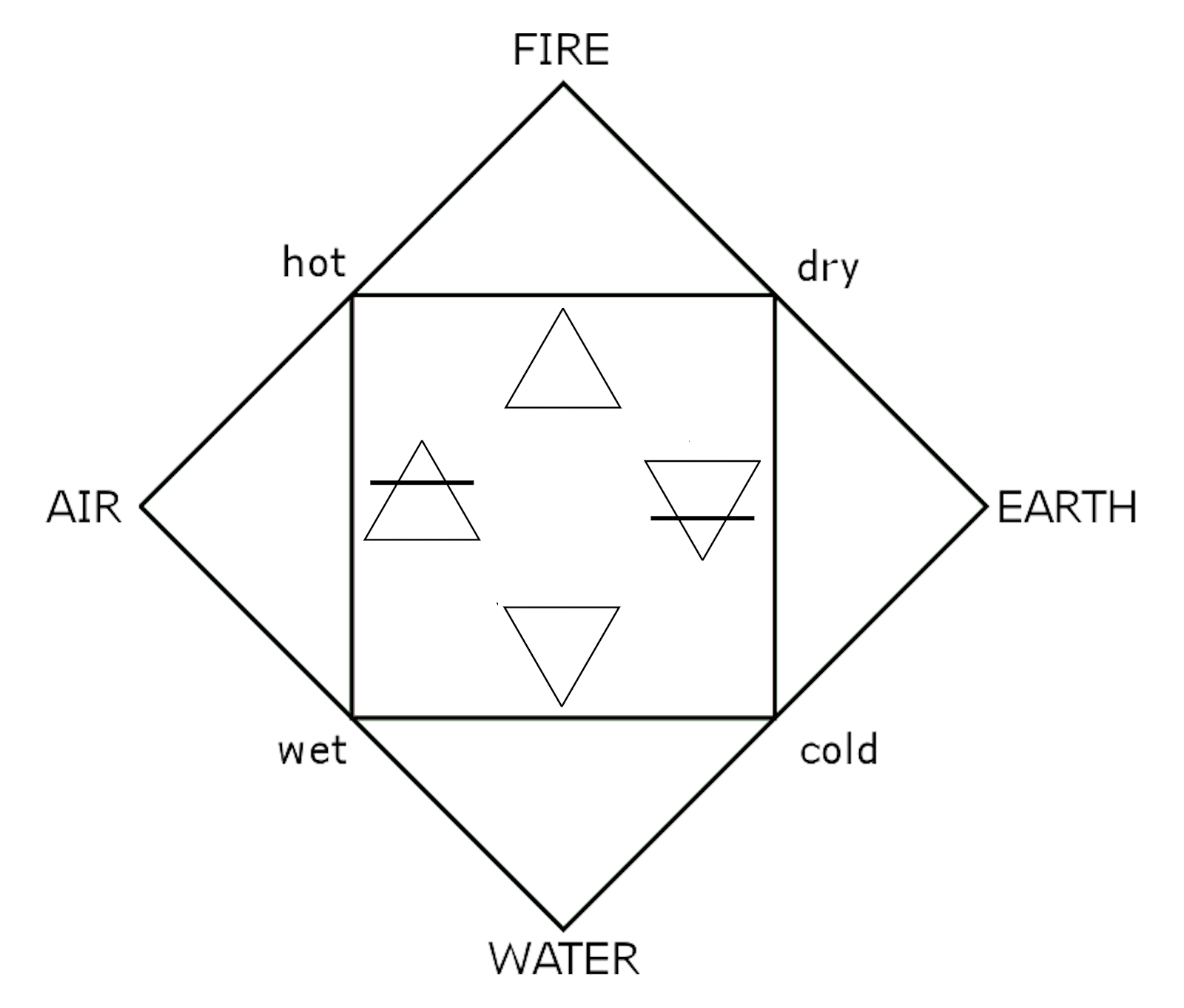
The Four
Elements in Greek Cosmology
Greek
philosophy supposed the Universe to comprise four elements: Fire, Water,
Earth, and Air. Air was originally supposed to
be a component of the Æther [ether, not to be
confused with the gas], the element that filled the Universe
in the absence of the other three. Empedocles referred
to these as "roots" (rhizomata, ῥιζώματα), and proved that Air was a
separate element by showing that a bowl filled with air
inverted in water did not immediately fill with water, but
retained a pocket of air. Notice that this shows by experiment
that Air is something, rather than nothing. Aristotle was
the first to call these roots "elements" (stoicheion,
στοιχεῖον), the smallest unit of time on a sundial, or an
indivisible unit. The same root appears in Stoichiometry,
the branch of chemistry that deals with ratios between
reactants and products.
Note that the diagram includes multiple
paired associations and opposites, in keeping with
Aristotelian notions of dichotomy. Cold / Hot, and Wet
/ Dry are paired across the diagram. Water and Fire are
fundamentally contrasted: fire rises, water falls (note
directionality of their paired alchemical symbols). Water is
by nature wet and cold, features it shares with Air and Earth,
respectively. Fire is hot and dry, also shared in the same
way. Air is wet or hot, according to the balance of moisture
and heat. Transformations among Ice, Water, & Steam are
not specifically accommodated in this scheme.
The
Four Elements can also be arranged in ascending order,
from lower to higher. Earth rises out of Water,
Air is above the Earth, and the Sun (Fire)
is over all. (Al)Chemical reactions occur as the reactants try
to return to their proper place in the series.
Other cultures recognize analogous
arrangements. The Oriental I Ching (Book
of Changes) comprises 64 hexagrams,
each comprising two trigrams placed
one on the other. Each trigram comprises three lines, broken Yin
(--- ---) or unbroken Yang (-------).
As there are 23 = 8 trigrams,
there are 82 = 64
hexagrams. Divination is practiced by focused attention to a
question, then composition of six Yin / Yang
lines for the two trigrams. The oracle is consulted for the
hexagram: as the same lines may be formed in different ways, moving
or static, which adds further depth to the
divination. The trigrams represent combinations of the same
concepts of Fire, Water, Earth, & Air. For example, if
trigram 7 for Fire occurs above trigram 8
for Water, this produces hexagram 38, "Fire in the
Lake", the symbol of Revolution, used as the
title of Frances Fitzgerald's Pulitzer-Prize winning history
of Americans in Vietnam.
Many commentators have noted the analogy
between 64 in the I Ching and the Genetic Code,
the latter as obtained as 43 = 64
triplets. It may be noted that the third (uppermost) line in
any trigram has the least influence on meaning, just as the
third letter of the Genetic Code may have little (two-fold
degenerate) or no (four-fold degenerate) on the amino acid
encoded.

